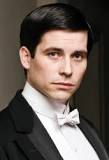
This year, my son is going out trick or treating for Halloween dressed as the Grim Reaper. Apropos of nothing, but it does demonstrate the allure the Dark Side* has, even for six year-old boys (maybe especially for six year-old boys).
Villains. In some romances, villains are two-dimensional characters set on one thing (Revenge/Rape/Disgrace/Financial Gain/Name Your Poison). They are obvious in their intentions to everyone but the oblivious hero and/or heroine, and they are what makes some well-written love stories go down the tubes for me.
And you would think writing about evil would be so easy! And fun, too! After all, Milton spends oodles of time writing about Satan, and Satan comes off as much sexier and fun than the other guy. Satan talks about his choice of Hell as a residence:
Here we may reign secure, and in my choice
To reign is worth ambition though in hell:
Better to reign in hell, that serve in heav’n
For me, the best villains are those characters whom you can’t tell are villainous from their first appearance on the page. What are their motivations? How will they attempt to achieve them? And then, when the book is over and all is revealed, you can reflect on how the villain fooled everyone, including the reader. Shakespeare says it better than I do:
And thus I clothe my naked villainy
With old odd ends, stol’n forth of holy writ;
And seem a saint, when most I play the devil.
Villains who end up being heroes or vice versa appear in Edith Layton’s False Angel and The Duke’s Wager, Mary Jo Putney’s The Diabolical Baron, Falling For Chloe by Diane Farr, Lady Sophia’s Lover by Lisa Kleypas, Bliss by Judy Cuevas . . . the list goes on and on (for more villains, check out All About Romance’s Special Titles Listing on Villains, which gives details about who becomes a hero/heroine in subsequent books).

I think that uncertainty is why we are fascinated by Harry Potter’s Professor Snape (the six year-old and I are reading Prisoner of Azkaban now), as well as Gollum from LOTR. My own private obsession, HBO’s Deadwood, features a masterful villain in the character of Al Swearingen–he’s murdered, stolen, and lied, not to mention swearing all the time, and yet there are times when you root for him.

Villainy can be scandalously sexy.
Which is why, this Halloween, you’ll be seeing many more devils**, witches, vampires, and werewolves than Good Samaritans, pilgrims progressing, Mother Theresa, and Gandhi.
Thanks for coming over to the Dark Side with me for a moment,
Megan
*Cara, I promise I had nothing to do with my son wanting to dress in a long, black robe.
**After six years of being a witch, my son made me switch to dressing as a lady-devil. I bought my red sequin horns, tail and pitchfork yesterday.














